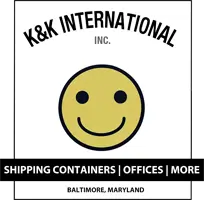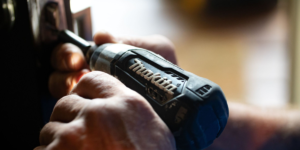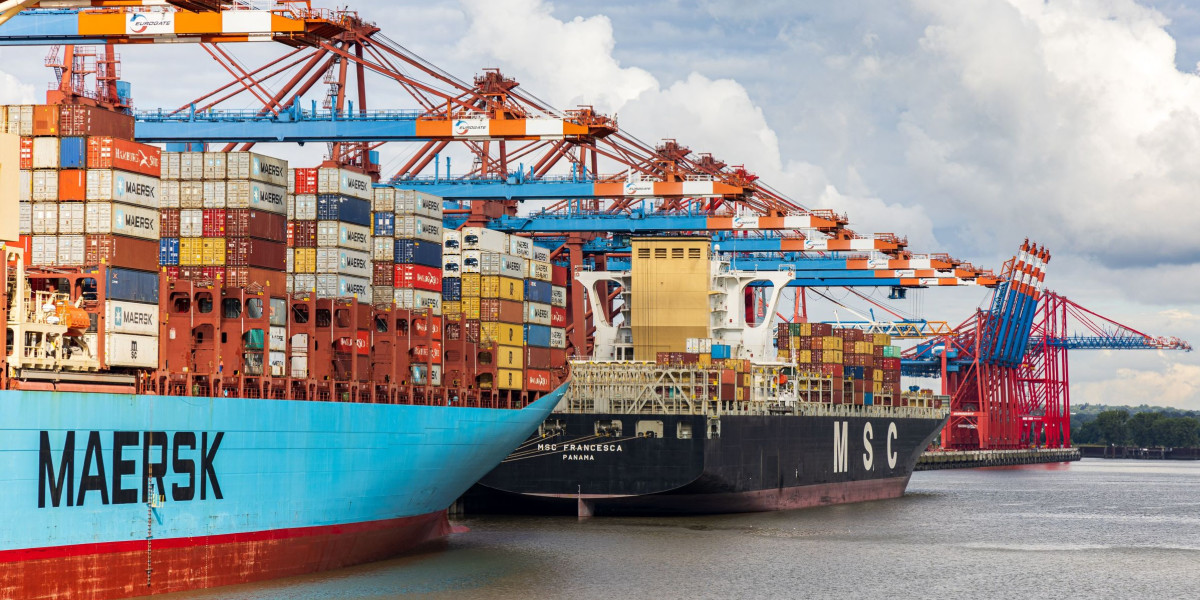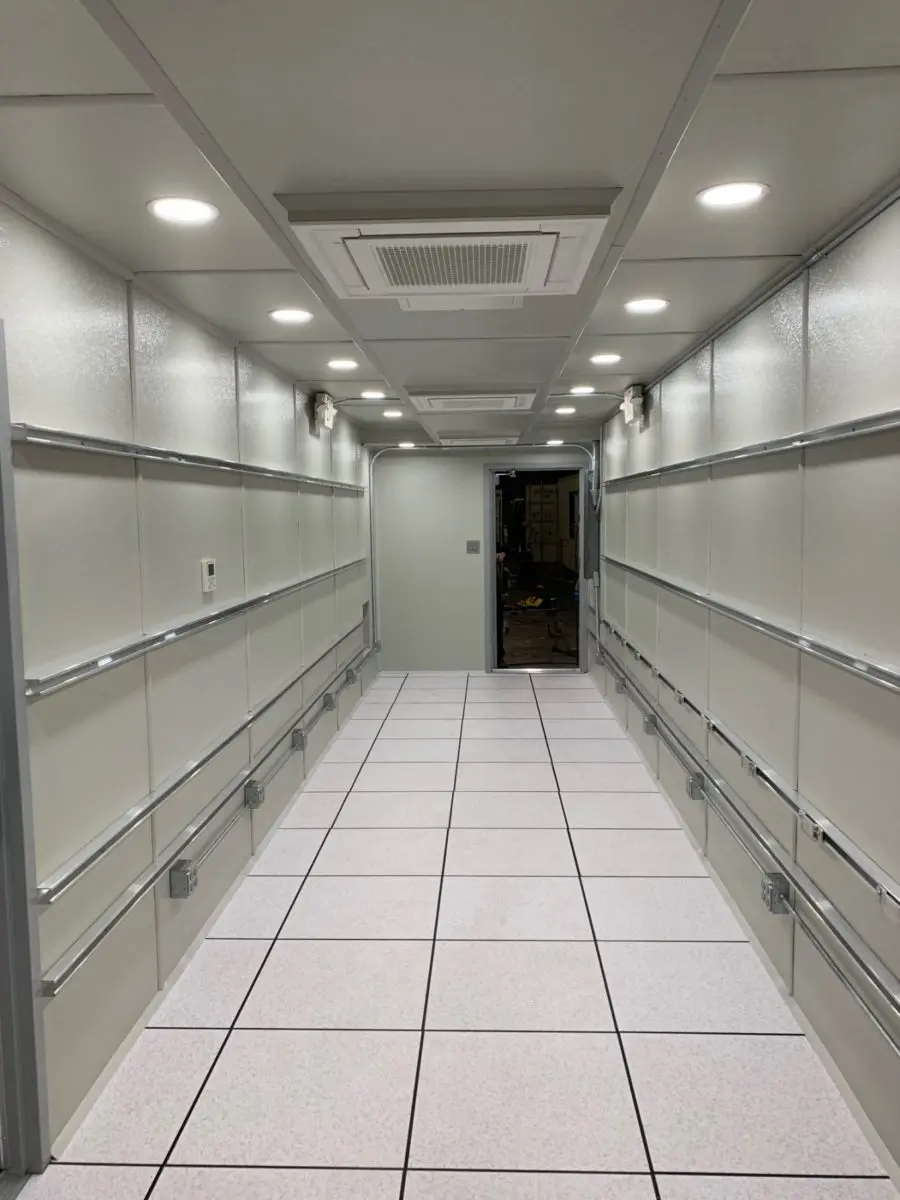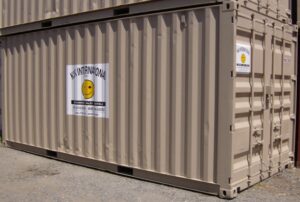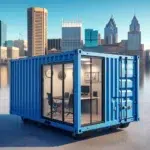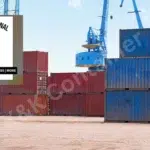Regular maintenance is crucial for shipping containers to ensure durability, longevity, and the protection of their contents. By using the right shipping container maintenance practices, container owners can prevent damage, decrease repair costs, increase the container’s value, and extend its certified transit period.
Understanding Shipping Container Repairs and Maintenance
To properly maintain a shipping container, it is important to perform common maintenance tasks such as cleaning, inspecting for structural issues, and preventing rust and corrosion. Regular maintenance helps identify potential problems early on and allows for timely repairs, ensuring the container remains in optimal condition. Following a maintenance checklist and adhering to a maintenance schedule are key tips for effectively maintaining shipping containers.
Let’s consider the case of a shipping container that is used for storing furniture. The owner understands the importance of regular maintenance to ensure the longevity of the container and protect its valuable contents.
They follow a maintenance checklist that includes cleaning the container regularly, inspecting it for any signs of damage or wear, and taking preventive measures to prevent rust and corrosion. By adhering to this maintenance schedule, the owner can ensure the container remains in excellent condition.
Common Maintenance Tasks for Shipping Containers
Regularly inspecting and repairing the container to maintain its wind and watertight characteristics is crucial. This helps prevent water leakage, which can lead to damage to the container’s contents.
Cleaning the outside of the container with mild detergent and a hose helps prevent rust and mildew buildup. Touching up paint as necessary is important to prevent rusting and maintain a clean appearance. Additionally, checking plumbing ports, drain lines, and electrical connections annually for any issues or damage is essential.Inspecting and replacing caulk and weather stripping annually helps prevent moisture damage.
Imagine a shipping container that has been in use for a few years. As an owner, you should regularly inspect your container, looking for any signs of rust, dents, or scratches.
They notice some surface rust and clean it off using a mild bleach solution and a broom. After cleaning, they touch up the affected areas with rustproof paint to prevent further corrosion. They also inspect the plumbing ports, drain lines, and electrical connections to ensure there are no leaks or damage. Finally, they check the caulk and weather stripping, replacing any worn-out parts to maintain the container’s integrity.
Preventing Rust and Corrosion
Protecting the shipping container from water is crucial in preventing rust and corrosion. Repairing dents, treating areas with rustproof paint, and sealing modified areas are effective measures to prevent corrosion.
Regularly cleaning off visible dirt and surface rust using a wetting agent or mild bleach, water hose, and broom helps maintain the container’s condition. It is also important to avoid allowing water to pool on the roof, as this can lead to rusting and thinning of the metal.
Removing debris, standing water, ice, and snow from the roof helps prevent rust and damage. Following manufacturer recommendations for climate control system maintenance, including regular filter replacement and professional service, is also essential.
To illustrate the importance of preventing rust and corrosion, let’s consider a shipping container located in a coastal area with high humidity. The owner takes preventive measures to protect it from rust and corrosion.
They regularly clean the container’s exterior using a mild bleach solution and a water hose. They also ensure that the container’s roof is clear of debris, preventing water accumulation. In addition, they follow the manufacturer’s guidelines for maintaining the climate control system, ensuring that the container’s interior remains in optimal condition.
Cleaning and Maintenance Techniques
Proper handling and transportation techniques are important for maintaining shipping containers. Using wood or concrete blocks to level the container on softer surfaces helps prevent damage.
Securing the container to the ground using appropriate anchoring methods protects it from strong winds. Forklifts or cranes should be used to move the container to avoid causing damage.
Regularly inspecting the foundation for settling and re-leveling if necessary is also important. Adding security locks, lock boxes, and security systems helps protect against theft.
Your shipping container may be situated on uneven ground. You can use concrete blocks to level the container, ensuring that it remains stable and balanced. Also secure the container to the ground using proper anchoring methods, such as ground anchors and chains, to protect it from strong winds. When moving the container, use a forklift to lift and transport it, ensuring that no damage is caused during the process.
Maintaining Doors and Windows
Maintaining the doors and windows of a shipping container is crucial for both security and functionality. Regular cleaning and lubrication help keep them in optimal condition.
It is important to replace rubber gasket seals if necessary to ensure proper sealing and prevent water intrusion. Checking and addressing any issues with hinges, locks, and weather stripping is also important to maintain security and functionality. Lubricating cargo door hinges as needed helps restore smooth operation.
Imagine a shipping container with doors that are becoming stiff and difficult to open. The owner cleans the doors thoroughly, removing any dirt or debris that may be affecting their operation.
They then apply a lubricant to the hinges, ensuring that the doors open and close smoothly. Additionally, they inspect the rubber gasket seals and replace any worn-out ones to maintain a watertight seal and prevent water intrusion.
Checking Modifications and Systems
Checking modifications and systems is an important part of shipping container maintenance. It’s crucial to inspect plumbing and electrical systems for leaks, loose connections, and faulty components.
Regularly monitoring the container for settling on softer surfaces and re-leveling as needed helps prevent structural challenges. Seeking expert attention for servicing refrigerated containers or addressing complex electrical issues is recommended. Additionally, regular cleaning and maintenance of electrical systems, including checking for loose connections and faulty wiring, is important.
Let’s say a shipping container has been modified to include plumbing and electrical systems. The owner inspects these systems regularly, checking for any leaks, loose connections, or faulty components.
They also monitor the container’s position on softer surfaces, ensuring that it remains level and stable. If any issues arise with the refrigeration system or complex electrical components, they seek the expertise of professionals to address the problems promptly. Regular cleaning of electrical systems and checking for loose connections and faulty wiring helps maintain the container’s electrical functionality.
Creating a Shipping Container Maintenance Schedule
Establishing a regular maintenance schedule is essential to ensure timely inspections and tasks. The frequency of maintenance tasks may vary based on factors such as container usage, climate, and modifications. For new containers, monthly inspections and spot-cleaning are recommended.
Used containers require checking caulking, weather stripping, and rust removal. Regular lubrication and maintenance of doors, windows, and hinges are also important.
The owner of a shipping container creates a maintenance schedule to ensure that regular inspections and tasks are performed. They schedule monthly inspections for new containers, during which they check for any signs of damage or wear and perform spot-cleaning as necessary.
For used containers, they include tasks such as checking caulking, weather stripping, and removing any rust that may have developed. Additionally, they ensure that the doors, windows, and hinges receive regular lubrication and maintenance to keep them in optimal condition.
Tips for Pest-Proofing Containers
Pest-proofing shipping containers is important to prevent infestations and potential damage to the contents. Sealing any holes, rusting, or gaps that could serve as entry points for pests is crucial.
Using pest control measures such as sealing, traps, and repellents helps prevent infestations. Regularly inspecting and maintaining the container helps prevent pest entry and infestation. Keeping the container clean, avoiding the storage of items that may attract pests, and minimizing potential damage are also important tips.
Picture a shipping container that’s used for storage. The owner takes precautions to prevent pest infestations.
They seal any holes or gaps in the container’s structure to eliminate potential entry points for pests. They also use pest control measures such as strategically placing traps and repellents to deter pests from entering. Additionally, they regularly inspect and maintain the container, ensuring that it remains clean and free from any potential pest attractants.
Proper Handling and Transportation
Proper handling and transportation techniques are essential for maintaining shipping containers. Avoiding excessive weight on the roof and considering reinforcement if necessary helps prevent damage.
Using appropriate equipment, such as forklifts or cranes, to move containers without causing damage is important. Choosing a flat and solid ground for container placement helps prevent moisture damage.
Securing the container to the ground using proper anchoring methods protects it from strong winds. Regularly monitoring the container for settling on softer surfaces and re-leveling as needed helps prevent structural challenges.
When transporting a shipping container, it’s important to ensure that excessive weight is not placed on the roof. The owner takes precautions to distribute the weight evenly across the container to avoid any damage.
They also use appropriate equipment, such as a forklift or crane, to lift and move the container without causing any structural issues. When placing the container, they choose a flat and solid ground to prevent moisture damage. Finally, they secure the container to the ground using proper anchoring methods, ensuring that it remains stable and protected from strong winds.
Wrapping Up
Regular maintenance is key to ensuring the durability, longevity, and value of shipping containers. By following proper maintenance techniques and schedules, container owners can prevent damage, decrease repair costs, and extend the container’s lifespan.
Implementing the provided tips and guidelines will help maintain shipping containers in optimal condition. Remember to consult a professional or seek expert advice when necessary to address complex maintenance issues or modifications. By prioritizing shipping container maintenance, owners can protect their investment and ensure that the containers remain in excellent condition for years to come.
Need a new container for your next government, municipal, or commercial project? Call us now or request a quote and we’ll get back to you within two to three business days.
